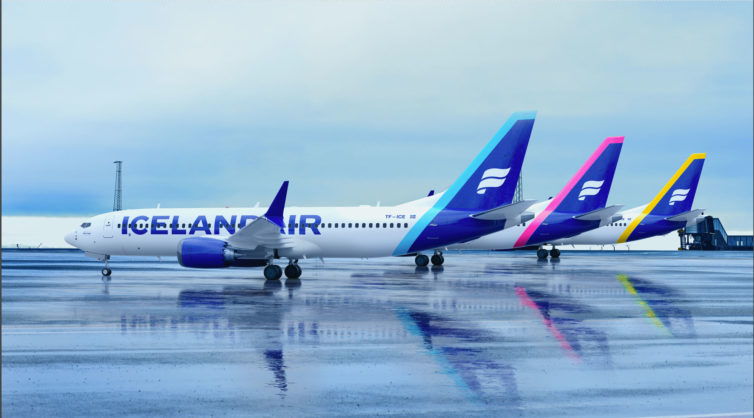
Icelandair’s livery refresh features larger titles with a revised font, and a variety of new colors on the tail – Image: Icelandair
In what Icelandair’s director of marketing Gàsli S. Brynjólfsson describes as “More of a refresh, not a total change,” the airline has begun rolling out an updated livery and associated marketing collateral.
Icelandair’s current branding was last updated in 2006. “We needed to strengthen our story and the emotional part of the brand,” Brynjólfsson said. “Icelandair culture has changed a lot, it’s much more relaxed than it was before.”
For perspective, he explained that the idea was to democratize the brand, as the current white, blue, and gold livery had been seen as a bit stuffy. “We took the gold out – it came up a few times in the talks with experts and focus groups that the gold-and-blue feels a bit royal – Icelandair is not a royal airline – Iceland is very democratic with small power differences,” he said.
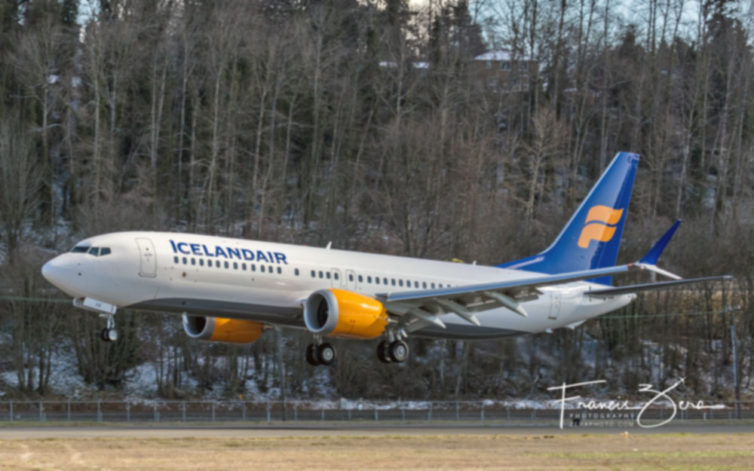
Icelandair’s now-former livery seen on its very first 737 MAX-8, TF-ICE, which was also the first in the fleet to receive the update
“We are so much like a normal Icelandic company – the power distance between people is very little – we’re a company of equals, so that’s something that needs to be represented in the brand,” he explained.
For those who are fans of the airline’s iconic special liveries like Hekla Aurora and Vatnajökull (the glacier livery), he was reassuring. “We’re definitely going to continue to have special liveries.” But don’t expect to see the new livery on the airline’s substantial 757 fleet.
“I doubt that we will do the refresh on the 757s – we’re doing just the MAX to begin with. The fate of time for those planes (the older 757s), combined with the cost of changing those planes, would not be reasonable.” He did say the airline’s two 767s would likely receive the makeover at some point.
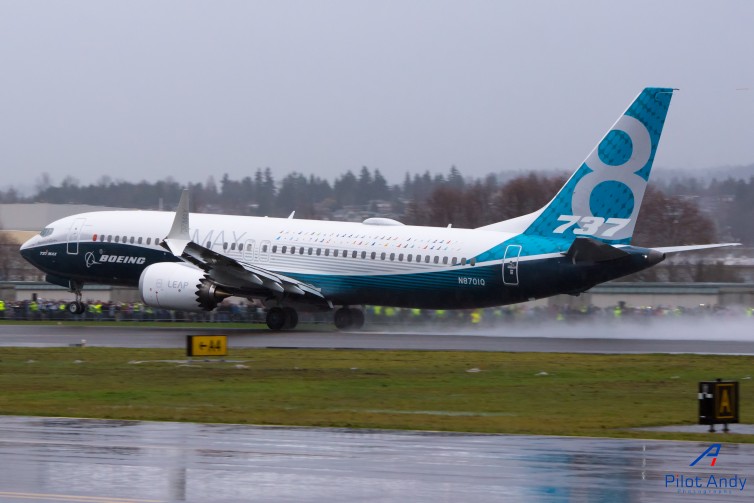
The first 737 MAX takes off from Renton – Photo: Chu-Yi Chuang
Yesterday, the Boeing 737 MAX successfully completed its first flight — and landing. It took off at 9:46 am (PST) to the cheers of several thousand Boeing employees and media. Wait… wasn’t that earlier than planned — it sure was!
I often poke fun of “Boeing time,” which refers to them often being late for test flights. I might not be able to use the term anymore. We will see. Either way, I was quite impressed that they took off early, but they also had some motivation — the weather.
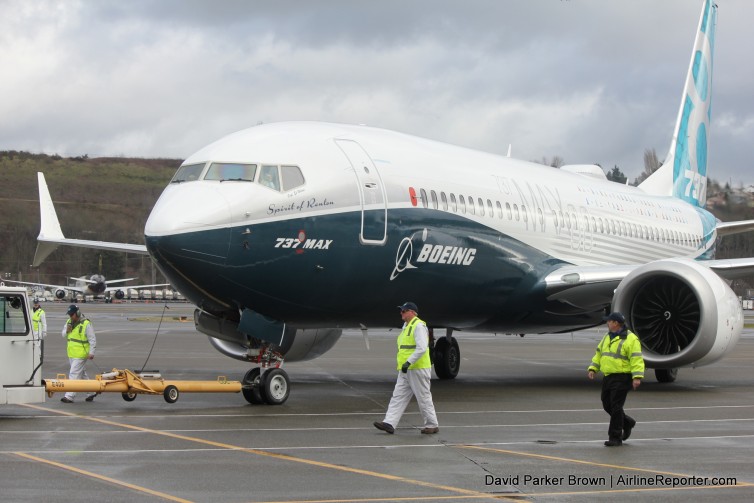
The first Boeing 737 MAX after landing at Boeing Field
The weather reports for the day did not look great. In the morning, it was overcast and raining. Boeing wanted to complete its almost three-hour test flight, and land at Boeing Field (BFI) before things got worse. It all worked out. It doesn’t mean I kept dry, but it was well worth it!
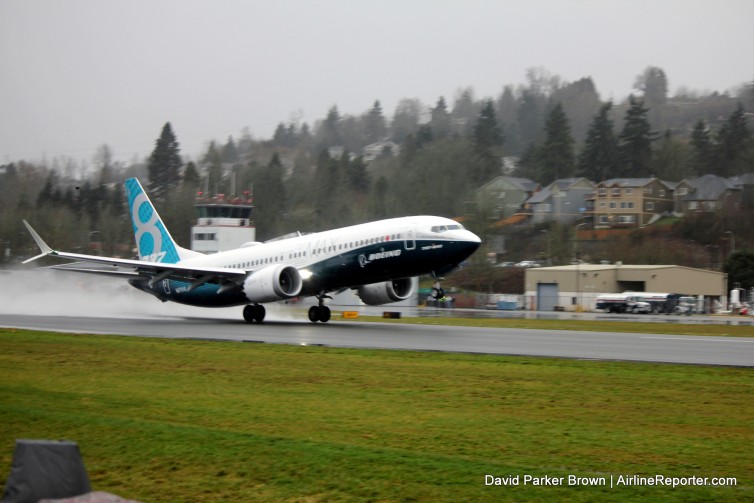
The 737 MAX taking off for its first flight
BOEING 737 MAX FIRST FLIGHT: Follow us live
Earlier today, the Boeing 737 MAX successfully completed its first flight. We have been doing things a bit differently and sharing our live coverage of the flight here. Later, we will update our story with photos and more information. Think of this as more of an evolving story, and don’t forget to come back for more!
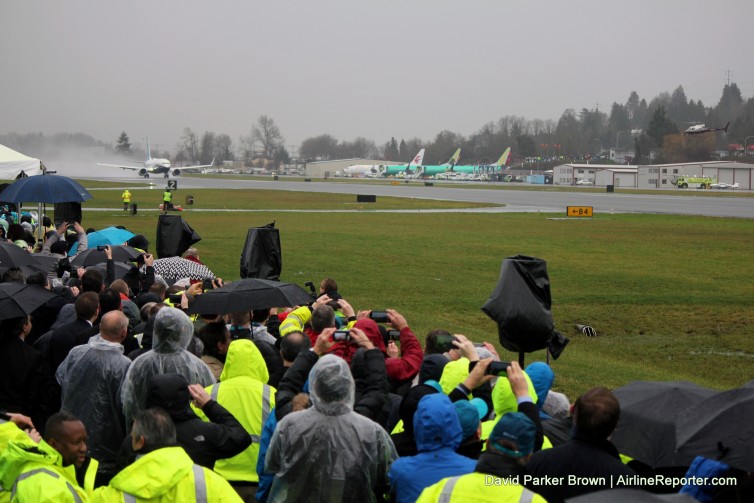
Several thousand Boeing employees and media braved the rain to witness the first flight of the 737 MAX
The 737 MAX took off on its first flight at 9:46 am (PST) to the cheers of several thousand of Boeing employees and media. The plane flew for nearly three hours, before landing a few miles away at Boeing Field (BFI) at about 12:32 pm. You can watch a live feed from Boeing and we will continue to cover the event live on our Twitter feed below:
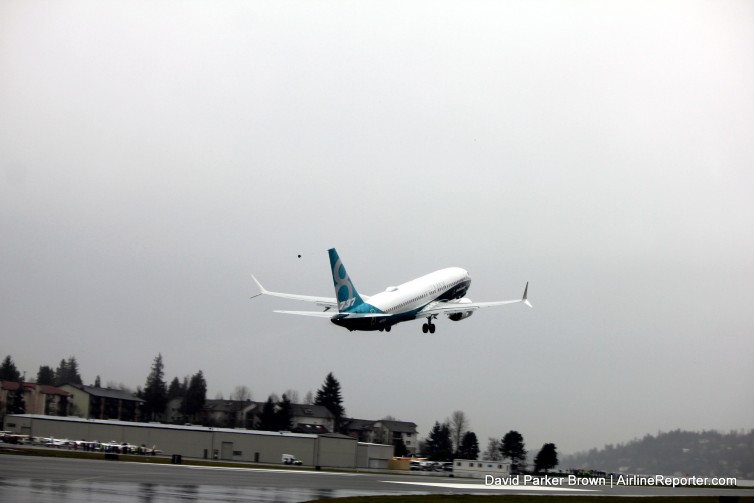
Up, up, and away! The 737 MAX leaves the ground on its maiden flight. We’ll catch up with it soon at Boeing Field.
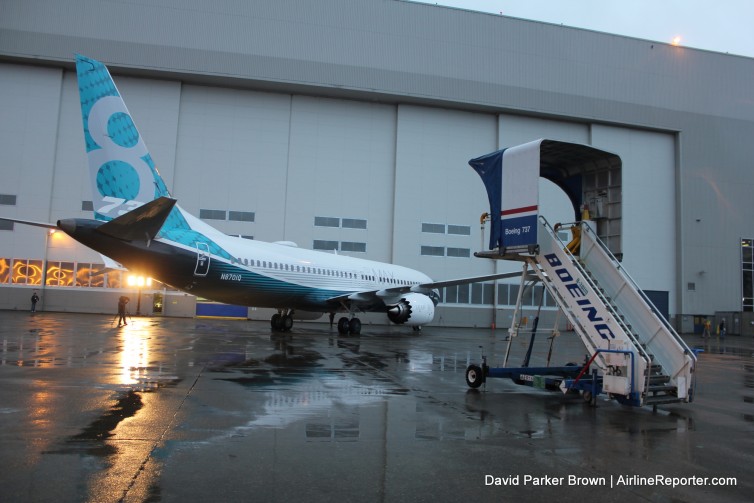
The past and future meet – the old 737 livery on the stairs and the the MAX’s new livery on the jet
This week, Boeing took the time to not only show off their improved production line for the 737 MAX, but also the first (and second) aircraft. Over two days, AirlineReporter visited Boeing’s 737’s factory in Renton, Wa to learn more about the 737 MAX and how Boeing will go about producing them.
The MAX is the fourth generation of the venerable 737 and will replace the 737 Next Generation (or 737 NG). The first 737 first flew in April 1967 and, although it might have the same name and a similar appearance, the aircraft has changed dramatically over the years.
The MAX will come in three main flavors: the MAX 7, MAX 8, and (wait for it) MAX 9. I have to say that it’s a bit weird to have the “MAX” [aka maximum] with a 7, but then also an 8 and 9? Oh well.
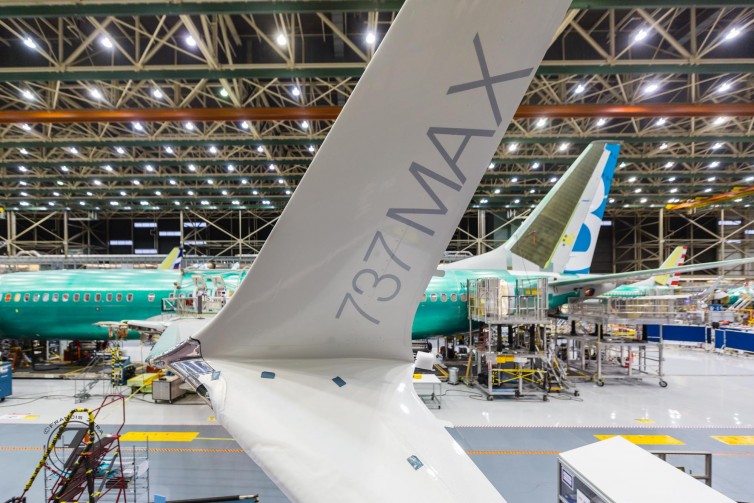
Boeing’s new Advanced Technology winglets are a distinctive feature of the 737 MAX.
The number of passengers in each respective version of the aircraft will be similar to the 737 NGs. The MAX 7 will carry 126 to 149 passengers, the MAX 8 will carry 162 to 200 (with the MAX 200 for Ryanair), and the MAX 9 will have 180 to 220. These changes are taking the 737 frame, technology, and cost savings… well… to the MAX!
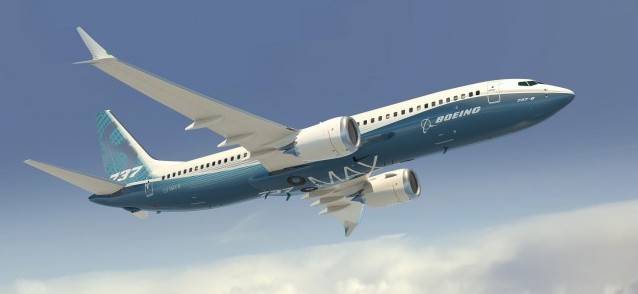
The Boeing 737 MAX 8 – Image: Boeing
Today, Air Canada, in a surprising move, has decided to replace their current Airbus narrowbody fleet with the offering from the competition – the Boeing 737 MAX.
They have ordered a total of 61 of the aircraft, with 33 going to the MAX 8 and 23 to the larger MAX 9. The “up to 109” part of the transaction comes from 30 purchase rights and 18 options. At list prices, the firm orders would be a transaction of over six billion dollars, but you better believe that the airline made a stellar deal for the planes.
“We are pleased to announce our agreement with Boeing for the purchase of 737 MAX aircraft as part of the ongoing modernization of Air Canada’s fleet,” said Calin Rovinescu, President and CEO of Air Canada. “Renewal of our North American narrowbody fleet with more fuel efficient aircraft is a key element of our ongoing cost transformation program and the enhanced passenger cabin comfort provided by the Boeing MAX will help us to retain Air Canada’s competitive position as the Best Airline in North America. Our narrowbody fleet renewal program is expected to yield significant cost savings. We have estimated that the projected fuel burn and maintenance cost savings on a per seat basis of greater than 20 per cent will generate an estimated CASM reduction of approximately 10 per cent as compared to our existing narrowbody fleet.”
By 2019, Air Canada plans to have an all Boeing long-haul fleet, and a majority Boeing short-to-medium haul fleet. Currently, the airline operates a fleet of 27 Airbus A319s, 36 A320s and 10 A321s.









